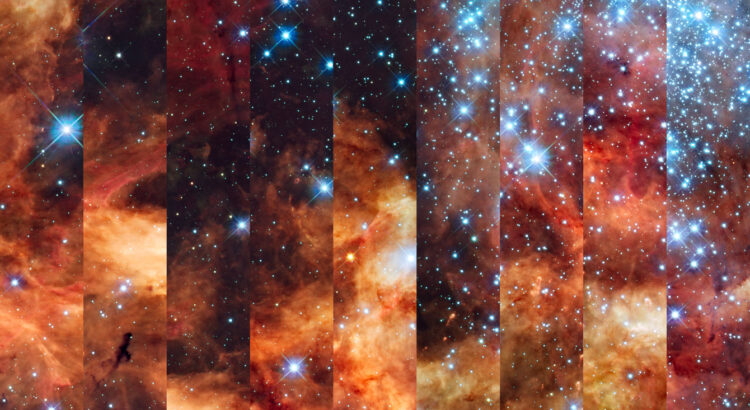[For the original news release, see here.]
Fabian Schneider leads the new research group “Stellar Evolution Theory” (SET) at the Heidelberg Institute for Theoretical Studies (HITS). The astrophysicist explores the turbulent life of massive binary stars and their explosive deaths in supernovae. He was awarded an ERC Starting Grant of about € 1.5 million by the European Research Council (ERC). He will use the funds to establish his own junior research group at HITS.
Stars are the basic building blocks of the visible Universe. Astrophysicists are particularly interested in massive stars. They are cosmic powerhouses, exploding in spectacular supernovae and leaving behind some of the most exotic forms of matter: neutron stars and black holes. Mergers of neutron stars and black holes are now routinely observed thanks to gravitational wave observatories. But there are still a lot of questions that remain unanswered.
Astrophysicist Fabian Schneider investigates the turbulent lives of massive stars. Since 1 January 2021, he has been the leader of the new research group “Stellar Evolution Theory” at the Heidelberg Institute for Theoretical Studies (HITS). He had successfully applied for an ERC Starting Grant from the European Research Council (ERC), and he is now establishing his own junior research group. HITS now consists of 13 research groups, four of them in the field of astronomy.
Bonn – Oxford – Heidelberg: a scientific journey
Fabian Schneider studied physics at the University of Bonn and completed his PhD in astrophysics at the Argelander-Institute for Astronomy in 2015. He then joined the Department of Physics of the University of Oxford as a “Hintze Fellow”, where he did research on massive stars, their magnetic fields and supernovae. During this time, he started to collaborate with Friedrich Röpke from HITS, a joint venture that became even more intense after he moved to Heidelberg in 2018. Since then, Schneider has been a “Gliese Fellow” at the Center for Astronomy of Heidelberg University and, at the same time, visiting scientist in the PSO group at HITS. In October 2019, he published a study in “Nature” on the origin of magnetic fields in stellar mergers, together with colleagues from Garching and Oxford. In 2020, he was awarded an ERC Starting Grant and decided to choose HITS as the host institution for his new group.
When massive stars collide
The new SET group focuses on massive binary stars, which make up the majority of massive stars. During their lifetime, they can reach a stage where their outer layers are transferred onto their companion. The mass transfer profoundly changes the evolution of both stars. For example, if a star loses its envelope in a mass-transfer phase, it may explode in a supernova and produce a neutron star rather than collapsing into a black hole at the end of its life. In about 25% of massive stars, this mass-transfer even leads to a merger of both binary components.
About the ERC Starting Grants 2020
The European Research Council (ERC) is the premier European funding organisation for excellent frontier research. Every year, it selects and funds the very best, creative researchers of any nationality and age, to run projects based in Europe. The ERC offers four core grant schemes: The ERC Starting Grant helps early-career scientists and scholars to build their own teams and conduct pioneering research across all disciplines.
From a total of 3,272 applications, only 436 (13.3%) were selected for funding in this round. The new grantees will be based in 25 countries across Europe, with Germany (88 grants) as a top location. For the Starting Grants, the EU provides funding worth in total €677 million. The grants are part of the EU’s Research and Innovation programme, Horizon 2020.
See the ERC press release for more information:
https://erc.europa.eu/news/StG-recipients-2020
